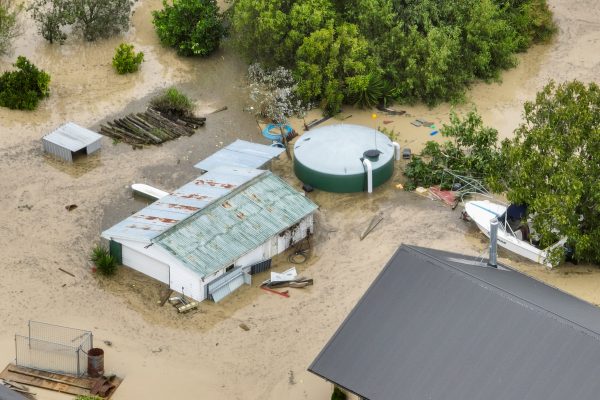New Zealand is under a state of emergency after Cyclone Gabrielle made landfall, inundating communities with flooding, forcing thousands from their homes and leaving upwards of 100,000 people without power.
“Cyclone Gabrielle is the most significant weather event New Zealand has seen in a century. The severity and the damage that we are seeing has not been experienced in a generation. We are still building a picture of the effects of the cyclone as it continues to unfold. But what we do know is the impact is significant and it is widespread,” newly elected New Zealand prime minister, Chris Hipkins, said on Tuesday.
According to officials, the cyclone has displaced approximately 2,500 people, a number that is expected to grow as larger, currently unreachable, areas are surveyed. Some communities have been entirely cut off from all communications.
Kieran McAnulty, New Zealand’s emergency management minister said the storm was “an unprecedented weather event.” This is only the third time New Zealand has declared a state of emergency, ever, which allows the federal government to distribute resources across the country to support civil defense efforts.

‘Nothing prepares you for this carnage’
As flood waters rose, people in Hawke’s Bay sought refuge on roofs while military helicopters struggled to reach survivors due to the weather, and near North Island reports have emerged of entire homes being swept away, with state highways cut off, The Guardian reported.
Success
You are now signed up for our newsletter
Success
Check your email to complete sign up
A resident of Esk Valley in Hawke’s Bay, Adrianne Mason, told The Guardian that her 22-year-old daughter was forced to escape through her bedroom window in the middle of the night, swimming through flood waters to a neighbor’s house on higher ground. Rescuers are struggling to reach flood victims as the rising river has washed out all roads to the region.
Mason said the flooding is “catastrophic” adding that her newly built home was immersed in water while her neighbors homes were entirely swept away.
In Tolga Bay, on the East Cape, a farmer described the destruction to The Guardian, saying that the floods carried “300kg logs, huge logs, one after another, rolling off the forestry up above us,” adding that the water came “pouring out over people’s homes and farms.” He said, “We prepared for the worst. Nothing prepares you for this carnage. Is anybody coming to help?”

Full extent of damage unknown
Currently, there are no formal numbers on the amount of people forced to flee, how many were injured or killed or how many homes and other structures have been destroyed.
Early on Tuesday, prime minister Hipkins said, “It will take us a while to get a handle on exactly what’s happened. A lot of families displaced, a lot of homes without power, extensive damage done across the country.”
Hipkins said that recovery efforts will most likely be lengthy and that “this won’t be an overnight recovery. It’s going to take a while – some people will be displaced from their homes for an extended period of time,” adding that the storm will most likely influence how New Zealand builds in the future.
“We need to look at the sustainability of some of the places where we have built previously,” Hipkins said, adding that, “We’ve got a long history of poor past decisions in New Zealand that we’re confronting right now.”
The worst-affected areas appear to be around the east coast and far north of the island nation with some communities, including Gisborne/Tairāwhiti, parts of Hawke’s Bay and Northland cut off from the rest of the island. Power has been lost in these areas, as well as mobile networks and roads are inaccessible.
According to Reuters, as of 6 p.m. (0500 GMT) the cyclone had moved southeast of Auckland and is expected to continue moving southeast, roughly parallel to the coast.
Weather warnings remain in place for much of the east coast, North Island and upper South Island.







